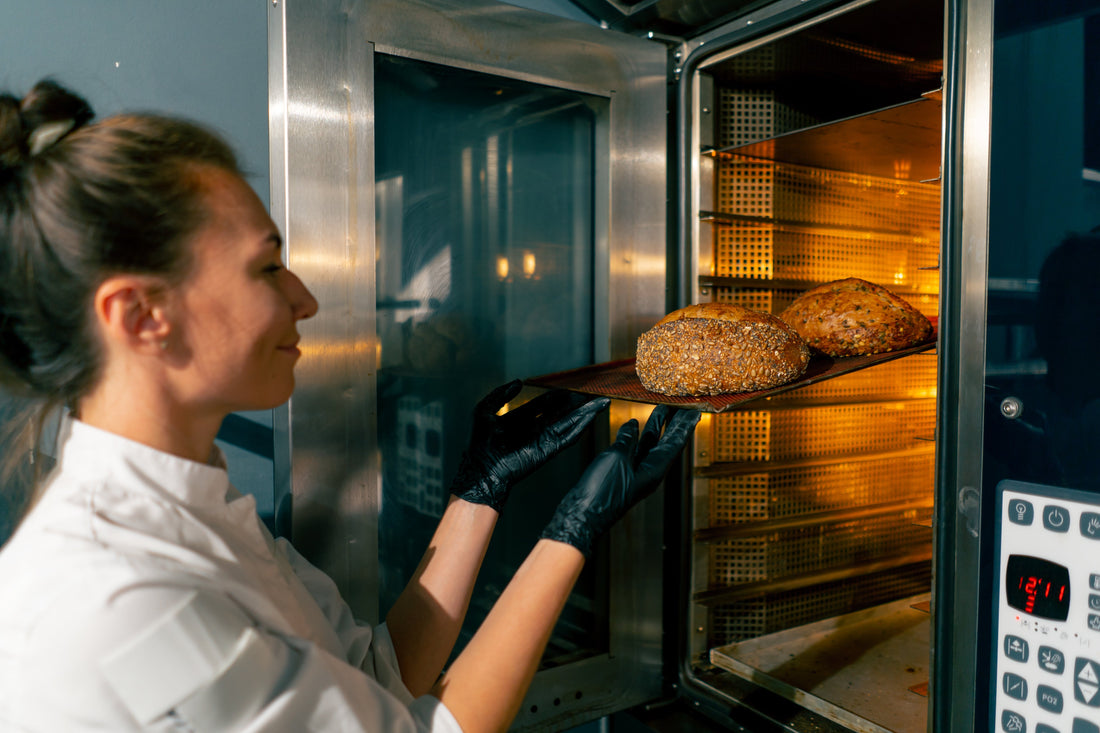
How to choose the perfect professional oven for your business
If you're looking for a professional oven for your business, you already know this is anything but a simple decision. The oven is one of the most important tools in a kitchen: everything from the final product quality to work timing, energy consumption, and customer satisfaction often depends on it.
Of course, each food service sector has specific needs: ovens for pizzerias are not the same as those used in pastry shops, and restaurants or bakeries require entirely different features. But once you've identified the most suitable oven category, the next step is more technical and also more complex: how can you tell if a model is really the right one?
This is often the stage where most doubts arise. That’s why we’ve created a guide based on the concrete needs of different foodservice sectors, to help you critically assess the technical features.
A sector-based guide to choosing a professional oven
The first criterion when choosing a professional oven is the type of business it will be used for. Each sector has its own rhythm, products, and cooking methods, so it’s essential to start here to narrow down your options.
At Bakeit, we’ve made your selection easier: on our website, ovens are already divided by category, based on the type of business they’re designed for.
- Pizza ovens: pizza, especially thin-crust or Neapolitan-style, requires very high temperatures and short cooking times. Ovens must reach 400–450°C, ensuring consistency between batches.
- Pastry ovens: precision is key here. Cooking must be even and controlled to the degree.
- Catering ovens: those working in kitchens know versatility is everything. In this sector, Lainox combi ovens are among the most popular choices.
- Bakery ovens: or bread, thermal stability is essential. These ovens must ensure even cooking, often with the addition of steam to achieve the perfect crust.
Should you choose a gas or electric professional oven?
Once you’ve selected the most suitable oven category for your business, the first technical aspect to consider is the power source. Many models, like the Rotor Oven, are available in both electric and gas versions. But which one is right for you?
Let’s compare the pros and cons of each.
| Features | Gas oven | Electric oven |
| Easy installation | ❌ | ✅ |
| Precise temperature control | ❌ | ✅ |
| Fast heat-up time | ✅ | ✅ |
| Low energy consumption | ✅ | ❌ |
| Minimal maintenance | ❌ | ✅ |
| Versatile use | ✅ | ✅ |
Key differences between gas and electric ovens
The differences between gas and electric ovens are not absolute advantages: they reflect different needs in terms of daily use, energy consumption, and maintenance. Let’s take a closer look:
- Installation: electric ovens only need a power connection (suitable for their power rating), while gas ovens require a compliant gas line, periodic inspections, and proper ventilation.
- Temperature control: electric ovens offer more precise temperature adjustments, thanks to resistors and digital thermostats. Gas ovens are slightly less reactive in this regard.
- Energy consumption: gas is cheaper than electricity, so gas ovens tend to have lower running costs, especially for large-scale operations.
- Maintenance: electric ovens have a simpler design and often come with self-cleaning features. Gas ovens need more attention when it comes to cleaning burners and grates.
When it comes to cooking results, though, there’s no significant difference: both types deliver reliable, professional performance if used correctly and calibrated properly.
Cooking technologies: convection, steam, or high-speed combi?
Beyond the power source, it’s also important to consider the cooking technology:
Convection ovens are the most common. Thanks to an internal fan, they distribute heat evenly and allow multi-level cooking without temperature differences. Ideal for pastry, deli, and light baking.
👉 Example: check out the Zanolli Convection Oven
Steam ovens inject humidity into the cooking chamber. Perfect for meat, vegetables, bread, or any product that needs a soft interior and thin crust.
👉 Take a look at the Sapiens Direct Steam Oven designed specifically for this purpose.
Combi ovens combine convection and steam, allowing you to manage different cooking phases in a single cycle. They’re the most versatile choice for professional kitchens with wide-ranging menus and complex operations.
👉 The Naboo Combi Oven is a great solution for handling multiple types of cooking in one go.
5 useful tips for choosing a professional oven
Once the main technical aspects are clear, it’s time to focus on those practical details that affect everyday use. Space, capacity, temperature, maintenance… These all complete the picture and help you make a choice tailored to your needs.
To guide you, we’ve gathered 5 practical tips to keep in mind before making a purchase:
- Check the available space in your kitchen or lab, including door clearance, ventilation, and ease of access for cleaning or maintenance.
- Review tray capacity and size. How many trays can it hold? Are they compatible with the ones you use? The capacity should match your daily production volume.
- Consider the maximum temperature: some preparations need very high heat, others work better with stable, lower temperatures.
- Don’t overlook maintenance. An oven that’s easy to clean saves you time after each use and helps prevent long-term malfunctions.
- If you're planning to grow, look for scalable or modular solutions so you won’t need to replace your setup in just a few years.
Not sure which model suits your business best?
The professionals at Bakeit are always available to provide personalized advice and help you find the perfect solution for your professional kitchen!